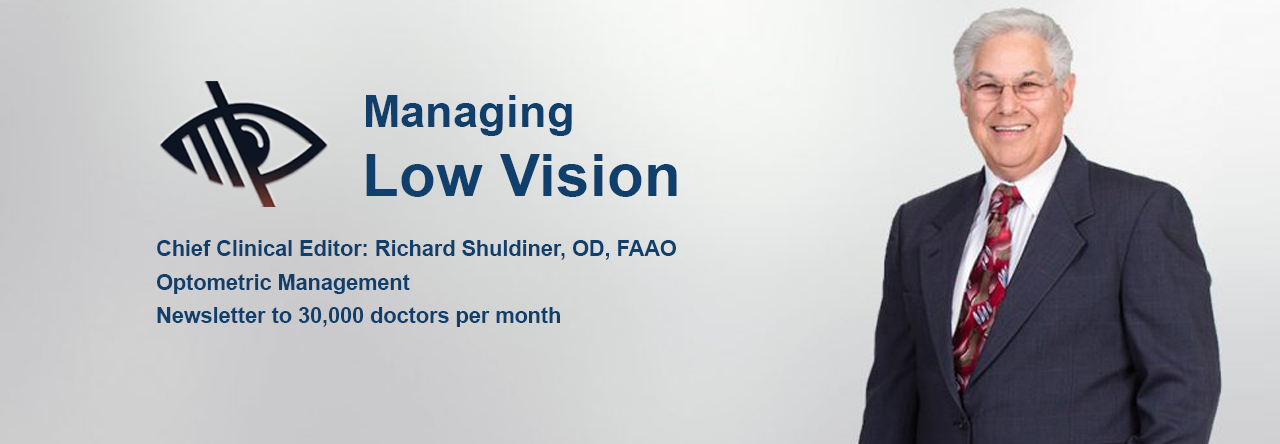By Richard J. Shuldiner, OD, FAAO, Chief Clinical Editor
No, I’m not referring to that old Pepsodent commercial we seniors remember. I’m referring to my first cataract removal just the other day. It’s very interesting to actually experience what I’ve been telling patients for the past 50 years, and it’s kind of fun comparing the color differences from one eye to the other.
It’s also been a learning experience, having had low vision for the past few months. Low vision is defined as: best corrected vision which is insufficient to do what you want to do. I’ve also been experiencing the low vision device concept of “task-specific”, as I’ve been explaining to patients over the past 40 years in low vision. Here is what I’ve been experiencing prior to the surgery:
- When COVID struck, and all of our regular TV programs went to re-runs, I decided to join the rest of the world in viewing Prime, Netflix and Roku. So, I hit search to find some shows and, low and behold, the text appeared so small, I could not read it! I went downstairs and grabbed my bioptic telescope glasses, which I had made years ago for the baseball and football games we now cannot attend. WOW, what a difference. So, for the past few months I’ve been switching between my regular glasses and my bioptics in the TV room.
- Last week something in the house started “chirping”. After some investigation, I found it was the plugged in CO detector. Chirp, chirp, chirp every 60 seconds, what does it want? I looked at the back of the unit and could read “directions”, but nothing else! Out comes the 12-diopter hand magnifier to read that it wanted new batteries.
- My wife asked me to look at some document on her computer. The font was a decent size, yet so faded that I couldn’t read it. I asked her to “bold” the font and, sure enough, I could read it. Another example of what I’ve been advising patients about is the reduction of contrast sensitivity.
Having low vision is, at the very least, very annoying and frustrating. Fortunately, I did not lose my independence. I did not feel unsafe driving and could still see patients, play golf, and be creative. Many are not so lucky. Many cannot simply have surgery and return to “normal”. There is a reason that referring vision loss patients for low vision rehabilitation is now the STANDARD OF CARE. The time has come, my fellow practitioners, to take a moment and say, “There are low vision doctors who can help,” instead of, “Sorry, nothing more can be done.”
Determining Who is a Low Vision Patient
Low vision care is about “doing”. It’s not about visual acuity. It’s not about visual field. It’s not about contrast sensitivity. It is about having the patient be able to do what they want to do.
Simply say: “Is your level of vision preventing you from doing what you want to do?” If they answer yes, say: “There are low vision doctors that can help. Do your research.”
Next week all the yellow will be gone as I have my second cataract surgery. It’s been an experience.

